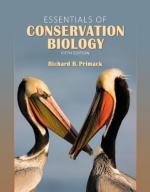|
This section contains 2,150 words (approx. 8 pages at 300 words per page) |

|
Conservation biology is a multidisciplinary field dedicated to protecting global biodiversity and critical habitats. It incorporates biological approaches such as ecology, evolution, and behavior studies, as well as other disciplines, such as political science, law, economics, and cultural anthropology. One of the major goals of conservation biology is preserving critical habitats and the species that inhabit them. Genes can tell us something about how a particular habitat is used by species and populations. Genetic approaches are also used to identify and classify organisms and evaluate the extent of genetic diversity within a particular population.
Categories of Threatened Populations
The International World Conservation Union (IUCN) provides definitions of terms used to describe the status of a species in the wild, based on a number of factors, including the size of a particular population, whether the population is declining in number, and, if so...
|
This section contains 2,150 words (approx. 8 pages at 300 words per page) |

|


